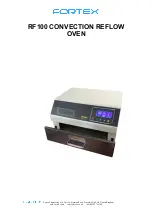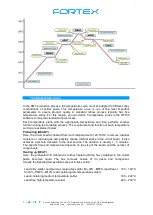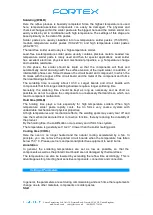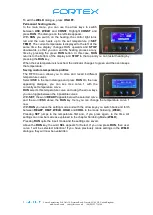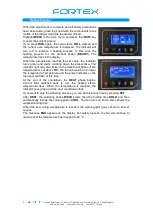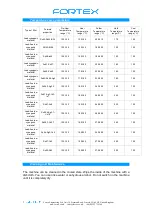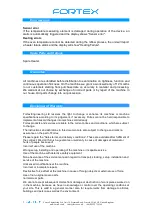
Fortex Engineering Ltd, Unit 16, Freeman Road, Lincoln, LN6 9AP, United Kingdom
www.fortex.co.uk [email protected] +44(0)1522 718 168
Soldering (WELD)
Here the reflow process is basically completed. Since the highest temperature is used
here, temperature-sensitive components can easily be damaged. The physical and
chemical changes within the solder paste are the biggest here and the molten solder can
easily oxidise by air in combination with high temperature. The settings of this stage are
based primarily on the data of tin pastes.
Solder pastes are usually classified into low temperature solder pastes (150-180°C),
medium temperature solder pastes (190-220°C) and high temperature solder pastes
(230-260°C).
The lead-free solder used today is a high-temperature solder.
Lead-free low-temperature solder paste usually contains precious metals. Leaded low
temperature solder paste is rarely used and then for special applications. Lead solder
has excellent electrical, physical and mechanical properties, e.g. Temperature change
and oxidation resistance.
In this phase, the solder should be liquid so that the components will float and
automatically center and align with the surface tension of the liquid solder. In addition, 2
intermetallic phases are formed between the circuit board and component, in which the
tin mixes with the copper of the circuit board and the metal of the component and forms
the ideal brazing structure.
The soldering time is usually about 10-30 s. Larger boards and circuit boards with
components that form large soldering shadows require a longer soldering time.
Generally, the soldering time should be kept as long as necessary and as short as
possible so as not to expose the components to unnecessary thermal stress, which can
lead to component malfunction.
Hold time (HOLD)
The holding time plays a role especially for high temperature solders. When high
temperature solder paste rapidly cools, the tin forms very coarse crystals with
undesirable mechanical and physical properties.
At high temperatures and mechanical effects, the welding spots may easily tear off and
lose the mechanical and electrical connection function, thereby reducing the durability of
the product.
By the holding time, the solidification occurs slowly and it form fine crystals.
The temperature is generally set 10-20 ° C lower than the solder melting point.
Cooling time (COOL)
Here the oven is no longer heated and the natural cooling accelerated by a fan. In
principle, you can remove the printed circuit boards when the temperature has fallen
below 150 ° C. Please use tools and personal protective equipment to avoid burns.
Annotation
In general, the soldering temperatures are set as low as possible, so that the
components as well as the printed circuit board are not damaged by thermal stress.
The temperature can also be lowered by extending the reflow time accordingly. This is
advantageous for protecting heat sensitive components, connectors and connectors.
Setting of Parameters
In general, the parameters are set during commissioning and each time the requirements
change due to other materials, components or solder pastes.
Start

